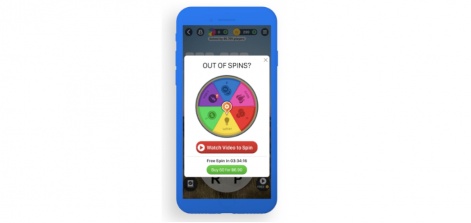Puzzle games are dominating the mobile gaming world, experiencing rapid growth year after year. According to data.ai’s 2023 report, the puzzle game genre has surpassed three billion downloads and is now the fifth largest in the industry. The popularity of puzzle games can be attributed to their simplicity, which appeals to a wide range of gamers.
These games offer short challenges that test players’ problem-solving skills, such as solitaire, sudoku, and hex puzzles. With their enjoyable and engaging gameplay, puzzle games have captured the attention of millions of players.
One defining characteristic of puzzle games is their use of a single currency, typically a soft currency like coins. To make in-game purchases, players need a significant amount of this currency. This is why ad placements, particularly rewarded videos that offer extra currency, are highly valuable.
Effective Rewarded Video Placements for Puzzle Games
To optimize the placement strategy for puzzle games, Anna Popereko, Game Design Consultant at Unity, provides insights into the most effective rewarded video placements.
1. Reward Multipliers
One popular rewarded video placement in puzzle games is the reward multiplier. After completing a level, players have the opportunity to multiply their rewards by watching a rewarded video. The multiplier can range from 2x to 20x the initial reward. This placement not only allows players to exponentially increase their currency but also creates a sense of urgency as they only have one chance to engage with the multiplier.
Playsimple’s Word Trip effectively implements this approach, offering players the chance to multiply their rewards by watching a rewarded video.
2. Extra Currency
Another strategic placement is the provision of extra currency, which serves a similar purpose as reward multipliers – increasing currency. Unlike reward multipliers, these placements are typically found on the home page or in the shop, accessible even when players are not actively playing the game. These placements are usually paced and limited to one or two impressions daily, with a countdown clock informing players when they can access the next reward.
Lihuhu’s Match Triple 3D incorporates this placement in its shop, allowing players to watch a rewarded video and receive ten coins when exploring currency bundles.

3. Revival
Given the often lengthy levels in puzzle games, revival placements play a crucial role. When players fail in the middle of a level, they can watch a rewarded video and resume the game from where they left off. Revival placements are particularly effective as they offer players a lifeline and save them from losing their progress and invested time. The longer the level, the more likely players will engage with this placement.
Lihuhu’s Match Triple 3D expertly utilizes this placement, allowing players to spend currency or watch a rewarded video to continue playing when they run out of lives, adding additional motivation to engage with the ad and avoid spending currency.

4. Booster
Puzzle games attract players who enjoy mental challenges and problem-solving. Booster placements cater to this motivation by providing assistance when players get stuck at any point in the level. By watching a rewarded video, players receive the necessary help or tips to overcome the current challenge without completely solving the puzzle for them.
Pixel by Number, developed by Wido Games, ingeniously implements this placement, allowing players to watch a rewarded video to have a certain area colored in, ensuring they stay engaged and motivated to complete the puzzle.

5. Extra Life and Mystery Rewards
Two other valuable placements are extra life and mystery rewards. In games with a life-based system, players can watch a rewarded video to gain an extra life, avoiding the waiting time for a refill. Extra life placements are perfect for players who go through multiple lives in one game session, and they also help increase overall session length.
Mystery reward placements offer an exciting alternative to extra currency placements. When players engage with the mystery placement, they have the chance to spin a wheel for a mystery prize, such as currency, lives, or power-ups. Similar to extra currency placements, these are time-limited, with a countdown clock.
In Playsimple’s Word Trip, players can watch a rewarded video to spin for their mystery reward, but there is a limit to the number of spins per day.

Conclusion
Implementing these strategic rewarded video ad placements can significantly enhance player experience, drive engagement, and boost revenue for puzzle games. By understanding players’ motivations and goals and leveraging ad placements to enrich and extend their playtime, puzzle game developers can ensure their games remain dominant in the industry.
Edited by Paige Cook
